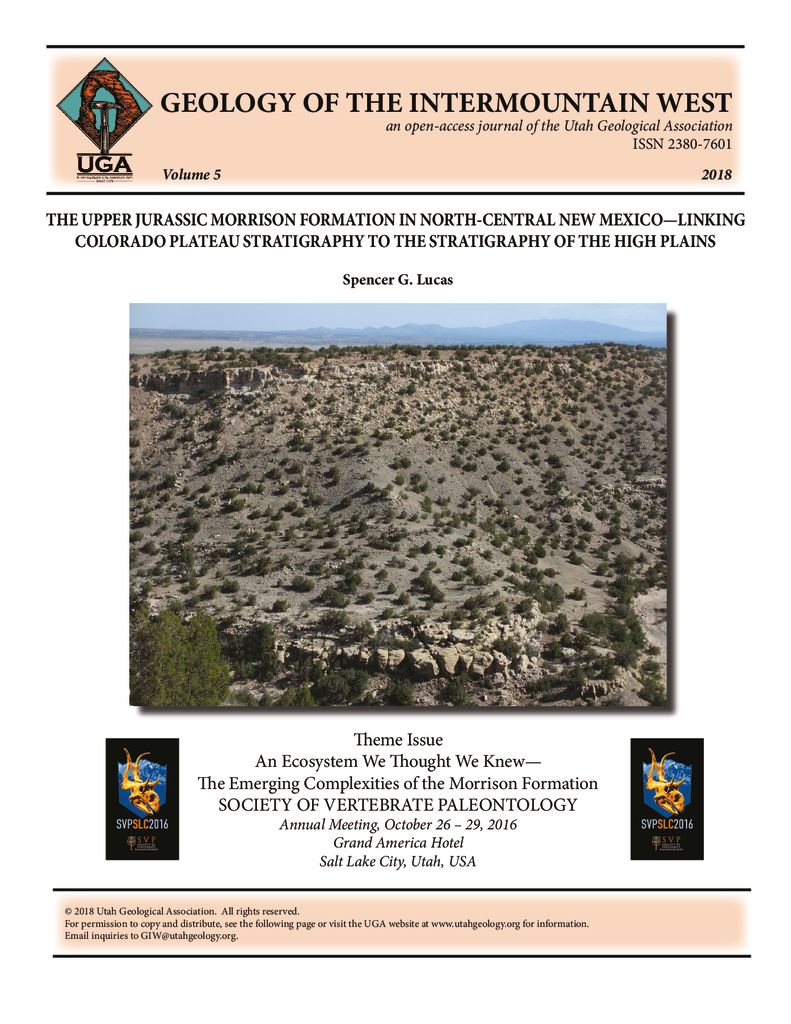The Upper Jurassic Morrison Formation in north-central New Mexico–Linking Colorado Plateau stratigraphy to the stratigraphy of the High Plains
Abstract
Most study of the Upper Jurassic Morrison Formation has focused on its spectacular and extensive outcrops on the southern Colorado Plateau. Nevertheless, outcrops of the Morrison Formation extend far off the Colorado Plateau, onto the southern High Plains as far east as western Oklahoma. Outcrops of the Morrison Formation east of and along the eastern flank of the Rio Grande rift in north-central New Mexico (Sandoval, Bernalillo, and Santa Fe Counties) are geographically intermediate between the Morrison Formation outcrops on the southeastern Colorado Plateau in northwestern New Mexico and on the southern High Plains of eastern New Mexico. Previous lithostratigraphic correlations between the Colorado Plateau and High Plains Morrison Formation outcrops using the north-central New Mexico sections encompassed a geographic gap in outcrop data of about 100 km. New data on previously unstudied Morrison Formation outcrops at Placitas in Sandoval County and south of Lamy in Santa Fe County reduce that gap and significantly add to stratigraphic coverage. At Placitas, the Morrison Formation is about 141 m thick, in the Lamy area it is about 232 m thick, and, at both locations, it consists of the (ascending) sandstone-dominated Salt Wash Member, mudstone-dominated Brushy Basin Member, and sandstone-dominated Jackpile Member. Correlation of Morrison strata across northern New Mexico documents the continuity of the Morrison depositional systems from the Colorado Plateau eastward onto the southern High Plains. Along this transect, there is significant stratigraphic relief on the base of the Salt Wash Member (J-5 unconformity), the base of the Jackpile Member, and the base of the Cretaceous strata that overlie the Morrison Formation (K unconformity). Salt Wash Member deposition was generally by easterly-flowing rivers, and this river system continued well east of the Colorado Plateau. The continuity of the Brushy Basin Member, and its characteristic zeolite-rich clay facies, onto the High Plains suggests that localized depositional models (e.g., “Lake T’oo’dichi’) need to be re-evaluated. Instead, envisioning Brushy Basin Member deposition on a vast muddy floodplain, with some localized lacustrine and palustrine depocenters, better interprets its distribution and facies.

Copyright (c) 2018 Utah Geological Association

This work is licensed under a Creative Commons Attribution 4.0 International License.




